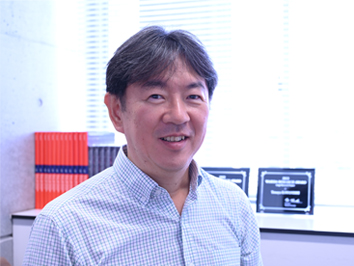Language : EN / JP
Language : EN / JP

Message

Principal Researcher's Greeting
Tetsuya Kawanishi
Department of Electronic and Physical Systems, School of Fundamental Science and Engineering, Faculty of Science and Engineering, Waseda University
It goes without saying that in today's contemporary society,
information communication networks are essential infrastructure.
Specifically, during the COVID-19 crisis, telework and online lessons rapidly penetrated and advanced through society,
and they contributed to maintaining economic activity. In addition to ensuring communication capacity,
providing uninterrupted service under any circumstances is becoming increasingly important.
With present-day networks, the advancements in virtual technology have led to an era in which it will be possible for end users to use services without any consciousness of the hardware involved,
and communication capacity will probably increase.
Therefore, innovation in physical transmission media that can connect users and networks will be essential for realizing even larger capacity communications and improving reliability.
In addition to the microwave radio waves used in mobile communication networks,
this will require the robust use of higher frequency electromagnetic waves termed millimeter and terahertz waves.
Fifth-generation wireless cellular technology (5G) is in practical use. For the next generation (6G),
terahertz band technology is critical for transmitting large volumes of data. However, terahertz waves attenuate significantly in the atmosphere,
making them unsuitable for long-distance communication (transmission distances of 1 km or less). Therefore,
integration with optical communications technology is necessary. Additionally, short-wavelength terahertz waves can be affected by mechanical vibrations,
requiring a multiphysics approach that includes electromagnetics, mechanical engineering, and environmental engineering for optimization.
Implementing this new transmission medium will also necessitate high-speed device development based on new physical principles, radio propagation analysis in real environments,
use of case studies in society, and international standardization efforts for the global use of new frequency bands.
Thus, realizing 6G will require collaboration among experts from multiple fields to integrate a wide range of knowledge.
Our research project, "Multiphysics ICT System Design,"
aims to integrate knowledge across a wide range of fields, including mechanical engineering and climate science, in addition to electronics and communications engineering.
Hence, it aims to significantly improve the capabilities of the various transmission media supporting
next-generation information communication networks and establish system design principles.
Designing ICT systems through multiphysics analysis allows us to create networks suited to diverse environments worldwide, including advanced and developing nations.
Researchers from Japan, Germany, and France are investigating terahertz waves as a vital new transmission medium,
integrating them with optical networks to develop communications with superior environmental resistance.
The Japanese team will focus on propagation analysis, antenna measurement, environmentally resistant optical communications,
and electromagnetic and mechanical multiphysics analysis. The German and French teams will handle radio wave propagation,
system integration simulation, use case studies, and terahertz device development.
We aim to promote knowledge sharing and build highly competitive international teams through workshops and joint experiments.
Our objective is to demonstrate the performance of globally installed networks academically
and theoretically and to establish design guidelines for optimizing the performance of actual networks.
In addition, through international collaborative research,
we aim to help students and young researchers deepen their specialized knowledge and acquire skills
for advancing projects towards social implementation and international cooperation.
In April 2023, the Institute of Radio Photonics for 6G Networks was established at Waseda University as a venue for comprehensive experimentation in international environments,
covering everything from fundamental research to international standardization.
Utilizing this platform, we are building a research foundation
to enhance social development through highly competitive international teams.
We ask for your understanding and support for this project.
